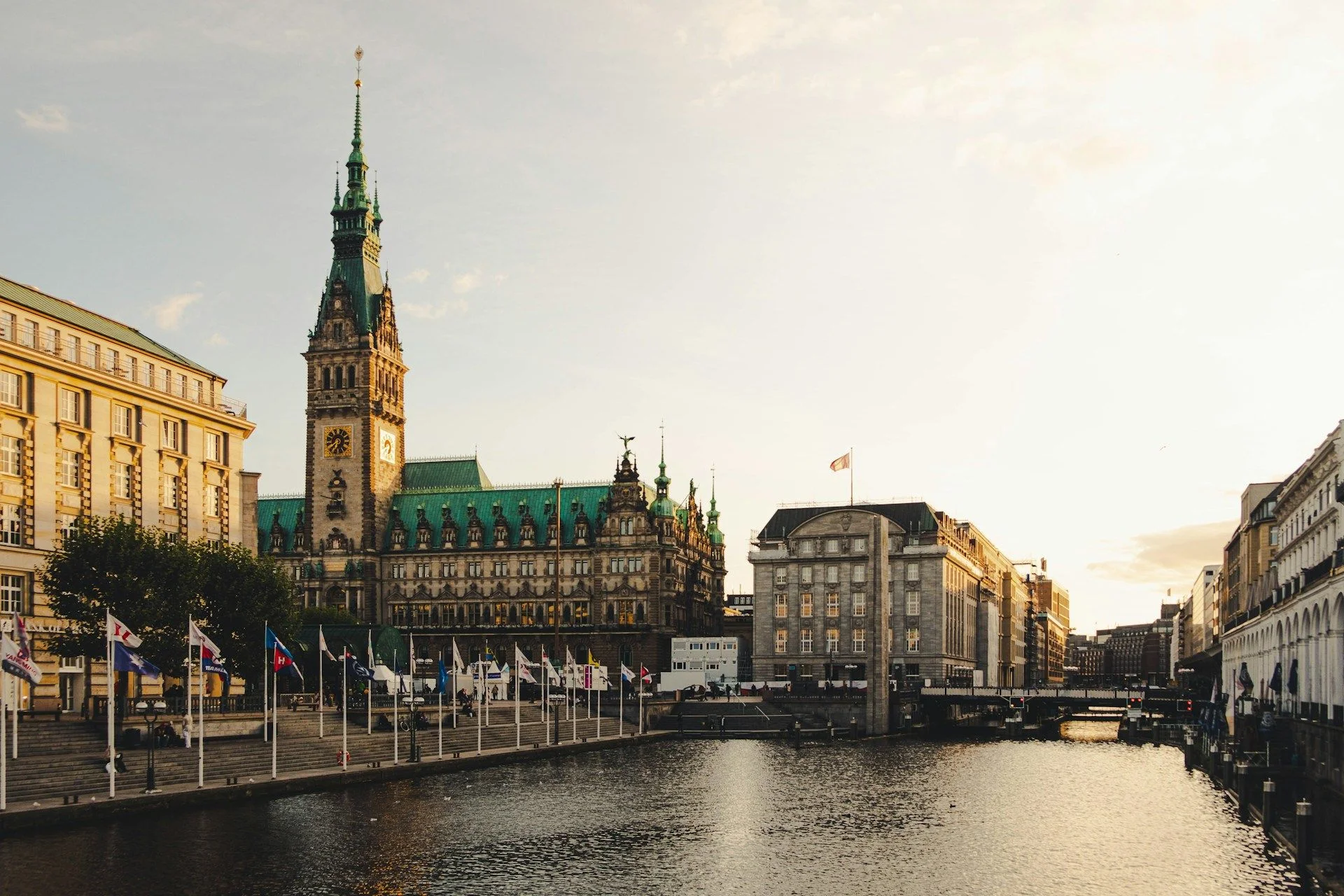Hochwertige gebrauchte Immobilien in HamburgHafenstadt mit BacksteinloftsBrücken und Mietstrom

Beste Angebote
in Hamburg
Vorteile der Investition in
deutsche Immobilien

Leitfaden für Immobilieninvestoren in Deutschland
hier lesen
Deutschland vereint Mietzuverlässigkeit, geringe Leerstände und moderate, aber stetige Preissteigerungen.
Berlin, München, Frankfurt und Hamburg ziehen sowohl lokale als auch internationale Käufer und Mieter an.
Europas Maßstab für Immobilienstabilität
Das Rechtssystem gewährleistet Klarheit im Eigentum und einen starken Mieterschutz – ideal für langfristige Anleger.
Institutionenstädte mit globaler Nachfrage
Mehr erfahren
Klare rechtliche Schutz- und Eigentumsstrukturen
Berlin, München, Frankfurt und Hamburg ziehen sowohl lokale als auch internationale Käufer und Mieter an.
Europas Maßstab für Immobilienstabilität
Das Rechtssystem gewährleistet Klarheit im Eigentum und einen starken Mieterschutz – ideal für langfristige Anleger.
Institutionenstädte mit globaler Nachfrage
Mehr erfahren
Klare rechtliche Schutz- und Eigentumsstrukturen

Nützliche Artikel
und Empfehlungen von Experten
Sekundäre Immobilien in Hamburg: Maritimes Erbe trifft modernes urbanes Wohnen
Hamburg, Deutschlands historische Hafenstadt und die zweitgrößte Metropole des Landes, bietet einen dynamischen Markt für sekundäre Immobilien, der Jahrhunderte hansescher Tradition mit zukunftsorientierter Entwicklung verbindet. Potentielle Käufer, die sich für Wiederverkaufsimmobilien interessieren, entdecken hier ein reichhaltiges Spektrum an Optionen – von eleganten Backsteinspeicherhäusern, die in Loftwohnungen umgewandelt wurden, entlang der Speicherstadt bis hin zu prächtigen Gründerzeithäusern in Rotherbaum und Uhlenhorst sowie funktionalen Betonwohnungen aus der Mitte des 20. Jahrhunderts in Volksdorf und Wandsbek. Die robuste Wirtschaft der Stadt, die von Versandriesen wie Hapag-Lloyd, einem aufstrebenden Medien- und Technologiesektor in den Innovationszentren von HafenCity und einer blühenden Dienstleistungsbranche getragen wird, sorgt für eine stabile Nachfrage nach Gebrauchtimmobilien. Mit einem umfassenden öffentlichen Verkehrsnetz – bestehend aus S-Bahn-Linien, U-Bahn-Tunneln und über 100 Buslinien – bleiben Wiederverkaufshäuser und -wohnungen in unterschiedlichen Stadtteilen gut mit Arbeitsplätzen, kulturellen Einrichtungen sowie Bildungseinrichtungen wie der Universität Hamburg und der HafenCity Universität verbunden. Käufer schätzen die sofortige Verfügbarkeit und die nachgewiesene Mietgeschichte von sekundären Immobilien in Hamburg sowie die Möglichkeit, bestehende Wohnungen durch gezielte Renovierungen nach ihren Wünschen zu gestalten.
Historische Viertel und denkmalgerechte Sanierung
Im Herzen der sekundären Immobilien in Hamburg liegen die historischen Viertel – insbesondere die Speicherstadt, das größte Lagerhausviertel der Welt auf Holzpfahlgründungen, und das angrenzende Kontorhäuserviertel. Hier begegnen Käufer gewölbten Decken, originalen Eichenbalken und großzügigen offenen Grundrisslösungen, die aus der Umwandlung von Backsteingebäuden des 19. Jahrhunderts resultieren. Denkmalpflegerische Richtlinien fördern eine einfühlsame Restaurierung: Investoren modernisieren typischerweise einfachverglaste Stahlfenster durch thermisch getrennte Aluminiumrahmen, die dem ursprünglichen Profil entsprechen, installieren verdeckte Fußbodenheizungen, die an das effiziente Kaltwärmenetz der Region angeschlossen sind, und modernisieren die sanitären und elektrischen Installationen, um die aktuellen Sicherheitsstandards zu erfüllen. Die Innenausstattung hebt akzentuierte Mauerwerk-Wände, minimalistische Eichenparkettböden und maßgeschneiderte Einbaumöbel hervor, die den industriellen Charakter bewahren. In benachbarten historischen Wohngebieten – Eppendorf und Harvestehude in Rotherbaum – sind die üppigen Alsterfleet-Kanäle von prächtigen Jugendstil-Fassaden gesäumt. Käufer nutzen hier oft Fördermittel zur Fassadenerhaltung, um Reparaturen an skulptierten Stuckdetails, schmiedeeisernen Balkongeländern und traditionellen Tonziegeldächern zu finanzieren, wodurch sichergestellt wird, dass sekundäre Immobilien ihre architektonische Integrität bewahren und gleichzeitig bezugsfertig bleiben.
Suburbane Wachstumszonen und Wertsteigerungsmöglichkeiten
Über das urbane Kerngebiet hinaus ändert sich der Charakter der sekundären Immobilien in Hamburg hin zu suburbaner Ruhe – besonders in Stadtteilen wie Volksdorf, Bramfeld und Poppenbüttel, wo solide Betonwohnblocks aus den 1960er und 70er Jahren mit niedrigen Wohnhausentwicklungen koexistieren. Wiederverkaufswohnungen in diesen Bereichen verfügen oft über große Balkone, Gemeinschaftsgärten und bereits vorhandene Parkplätze. Wertsteigernde Renovierungen konzentrieren sich auf die Verbesserung der Energieeffizienz – durch die Anbringung von ETICS (äußere Wärmedämmverbundsysteme), den Einbau von hochleistungsfähigem Dreifachverglasung und den Austausch veralteter Heizkörper durch intelligente thermostatgesteuerte Systeme. Innenraumtransformationen umfassen häufig die Umgestaltung dreizimmeriger Wohnungen in moderne Zwei-Zimmer-Grundrisse mit offenen Küchen-Wohnbereichen, die Modernisierung von Badezimmern mit zeitgemäßen keramischen Fliesen und die Integration von Einbauschränken. In Villenvierteln wie Blankenese und Othmarschen bieten 19. Jahrhundert Villen auf den Elbe-Ufermauern besondere sekundäre Immobilienmöglichkeiten; die Käufer beauftragen hier sorgfältige strukturelle Verstärkungen, restaurieren historische Holzvertäfelungen und fügen verglaste Balkone hinzu, um den Blick auf den Fluss zu genießen. Diese gezielten Aufwertungen – unterstützt durch kommunale Zuschüsse für nachhaltige Verbesserungen – ermöglichen es Hausbesitzern und Investoren, hochwertige Mieteinnahmen und langfristige Wertsteigerungen im gesamten Wohnbereich Hamburgs zu erschließen.
Die Anbindung und Lebensstilfaktoren festigen weiter die Attraktivität der sekundären Immobilien in Hamburg. Die umfassende HVV-Transportbehörde verbindet jeden Stadtteil – von den nördlichen Docks von HafenCity bis zu den südlichen Seegemeinden von Bergedorf – und sorgt dafür, dass Wiederverkaufsimmobilien zugänglich bleiben. Die laufende Expansion von HafenCity, die neue Wohnquartiere, Büros und kulturelle Zonen einführt, steigert weiterhin die Nachfrage in umliegenden Gebieten wie St. Pauli und Altona. Kulturelle Anker – die Elbphilharmonie, Miniatur Wunderland und das jährliche Reeperbahn Festival – ziehen internationale Besucher an und unterstützen robuste Kurzzeitvermietungsmärkte in zentralen Wiederverkaufswohnungen. Lebensqualitätsfaktoren – Alstersee-Wasserhäuser, weitläufige Grüngürtel wie Stadtpark und Planten un Blomen sowie internationale Schulen mit hohen Bewertungen – sprechen sowohl Familien als auch Expats an. Mit einem transparenten rechtlichen Rahmen, starken Mieterschutzgesetzen und einer robusten Wirtschaft bleibt sekundäre Immobilien in Hamburg eine beeindruckende Wahl für Käufer, die sowohl ein authentisches urbanes Erlebnis als auch eine nachhaltige Investitionsperspektive suchen.